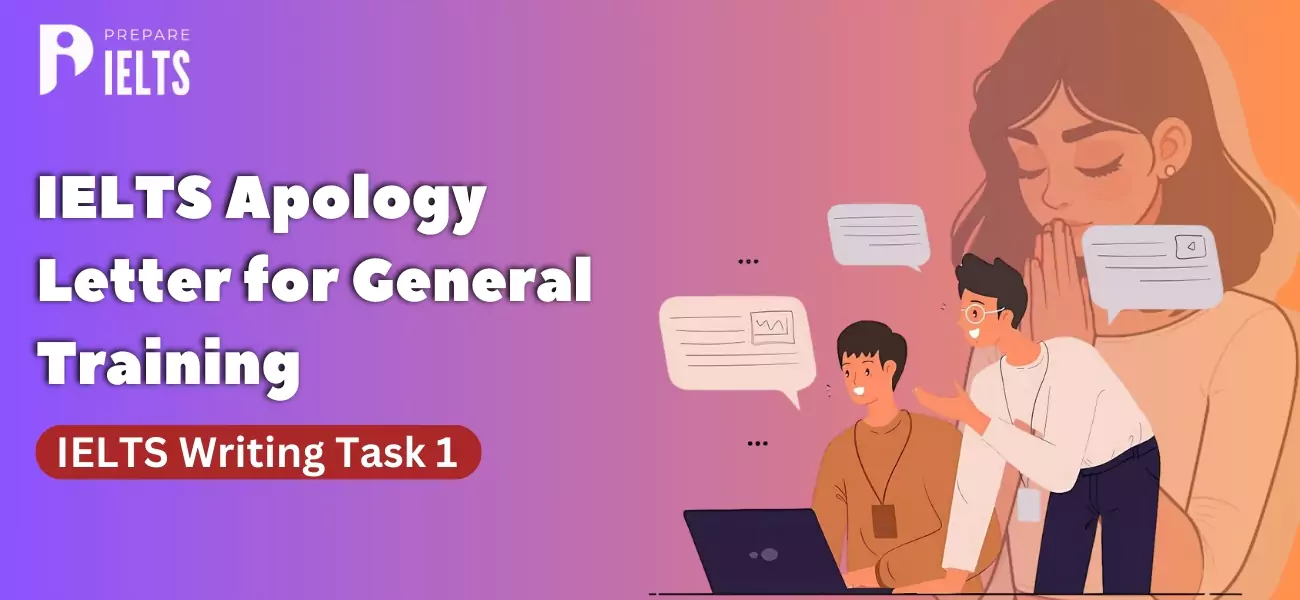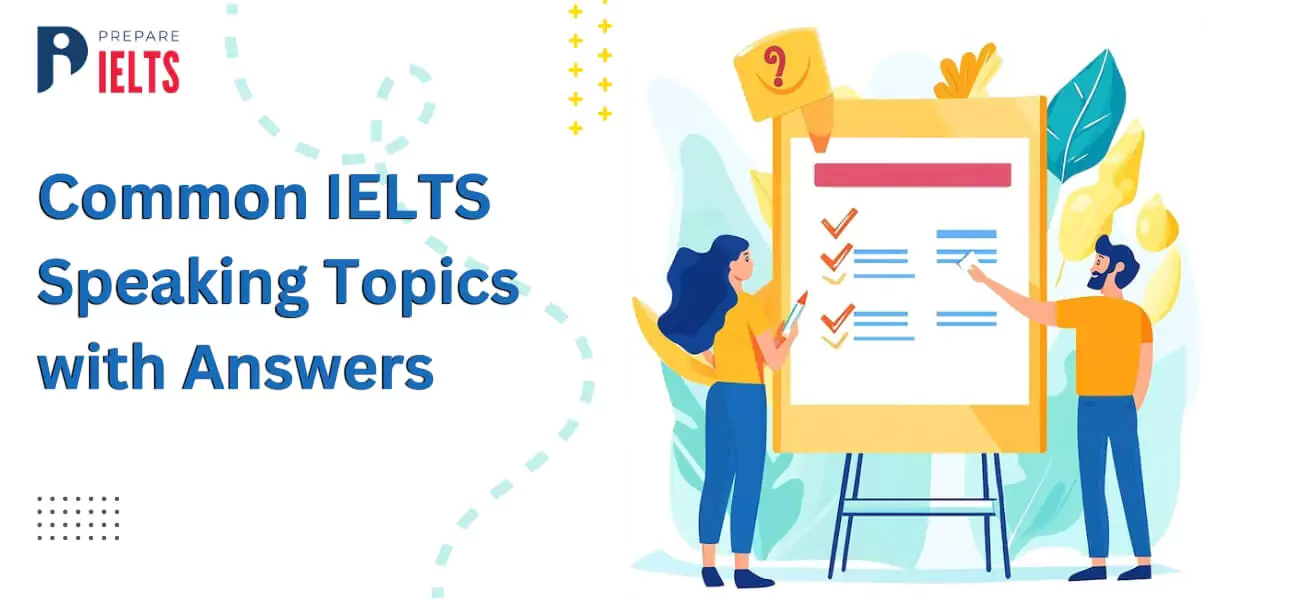
Overview
If you want to work or study below a degree level or immigrate to an English-speaking nation (such as Canada, Australia, New Zealand, and the UK), you need to take the IELTS General Training test.
From prestigious universities to renowned organisations, the International English Language Testing System, or IELTS, is universally accepted as a testament to one's English proficiency. This exam is, in essence, a global language benchmark measuring one's command of English.
In this blog, we have covered all the essential details regarding IELTS general training, its exam pattern, IELTS general training syllabus, and other topics.
What is IELTS General Training?
IELTS General Training is a comprehensive assessment of your English language skills designed to determine your eligibility for employment, secondary education, and immigration. Recognised by the UK, US, Canada, Australia, Ireland, and New Zealand, this exam opens doors to visas and job opportunities. The general component of the IELTS test is divided into four sections: speaking, general reading, general writing, and listening.
The listening and speaking components of the IELTS are identical for both the general and academic training versions. However, the reading and writing portions of the IELTS general training differ. To ace the IELTS general test format, you need to understand the test forms and become familiar with the IELTS general reading practice test. The IELTS general course score ranges from 0-9 band scores.
The IELTS general listening test has 40 questions in total over 4 sections. You will get about 30 minutes to complete minutes to transfer the answers to the questions and an answer sheet. Every right response is worth one mark.
The IELTS general reading requires sixty minutes to finish. There are 40 questions altogether in 3 sections. There are two tasks in the IELTS general training writing portion. The first one is a 20-minute deadline for a 150-word letter. The second assignment is a forty-minute essay. The three portions of the speaking portion each last 11–14 minutes.
| Section | Question | Time Given |
|---|---|---|
|
Listening |
40 questions 4 parts |
30 minutes (10 minutes transfer time) |
|
Reading |
40 questions 3 section |
60 minutes (including transfer time) |
|
Writing |
2 tasks |
60 minutes |
|
Speaking |
3 parts |
11-14 minutes |
IELTS General Training Syllabus
The reading, listening, and writing parts of the IELTS general training are administered on the same day, consecutively, without a pause in between. The day of the IELTS speaking exam is flexible and might fall on any day up to one week before or following the test date.
Candidates can schedule a time slot online for the speaking exam at a time and date of their choice. For a better understanding of the format and question categories of the test, candidates might compare the IELTS general training and academic versions:
| Sections | Description |
|---|---|
|
(30 minutes) |
After listening to four recordings, you must respond to the questions. The test consists of thirty minutes of recordings made by native English speakers. |
|
(60 minutes) |
The IELTS Reading test requires you to answer 40 questions and is designed to test you on an array of reading skills. You would have to read for gist, main ideas, details, logical arguments, skimming, and figuring out the writers’ attitudes, opinions and intentions. |
|
(60 minutes) |
Based on the module you are taking, the IELTS General Writing test has two assignments you must complete and covers subjects of general interest. IELTS General Writing Tasks 1 and 2 are 150- and 250-word writing assignments, respectively. |
|
(11-14 minutes) |
The IELTS Speaking test assesses your spoken English skills. The test is recorded and conducted in three parts. |
Register Now, for a free Mock test - Join Today!
IELTS General Training Exam Pattern
Taking the IELTS General Training is mandatory if you are travelling to an English-speaking country for work or training purposes. IELTS general training scores are necessary if you are travelling to another country on a business, sponsored job, or skilled worker visa. The four primary components of the IELTS exam pattern are the reading, writing, speaking, and listening sections. The following are the primary distinctions between IELTS academic and general training:
-
IELTS general training reading section is different from the academic;
-
IELTS general training writing section is different from the academic;
-
IELTS academic section consists of academic/educational contexts, whereas general training consists of communicative and general-interest-based contexts.
-
IELTS writing general training requires a semi-formal tone, whereas academic writing requires a formal tone.
Is IELTS General easier than Academic?
Regarding IELTS academic versus IELTS general training, the latter is thought to be relatively simpler than IELTS academic. IELTS Academic requires greater information because it is intended for educational purposes. On the other hand, IELTS General is intended for workers or training that does not call for a high level of language proficiency. The primary emphasis is on the speaking and listening abilities of the IELTS general training, which emphasises communication skills more than other sections. These two areas are considered the easiest of the four.
IELTS General Listening
The goal of the IELTS general listening section is to determine a candidate's level of spoken language comprehension if they intend to work overseas. IELTS online test general training guides in getting ideas about the different English accents.
Significant details regarding the general training listening component of the IELTS:
-
Section 1: 10 questions (General conversation between 2 English natives)
-
Section 2: 10 questions (Monologue on a general topic)
-
Section 3: 10 questions (Conversation between 2-4 people around academics)
-
Section 4: 10 questions (Monologue on an academic topic)
-
30 minutes to respond to 40 questions
Candidates must listen to pre-recorded recordings to complete these components of the IELTS general listening test. MCQ-style, fill-in-the-blank, flowchart, and table questions are all possible. People in India have become used to listening to English-language programming.
IELTS General Listening Score
This portion consists of 40 questions, each worth one mark. Consequently, the 40-point IELTS Listening score will be translated into a 9-band scale. Examinees will receive a score out of nine, where spelling and grammatical errors must be strictly avoided.
IELTS General Speaking
The 11–14-minute IELTS General Speaking section assesses the test-taker's ability to speak the fundamental English needed to live abroad. Examiners evaluate candidates based on four criteria: lexical resource, pronunciation, coherence and fluency, and accuracy and utilisation of grammar. Every criterion has a 25% weighting value.
-
There are 3 parts to this section.
-
Part 1 - 4 to 5 minutes: Questions are asked on general introduction like family, home, studies, work
-
Part 2 - 3 to 4 minutes: Test takers have to talk about a topic given through a cue card
-
Part 3 - 4 to 5 minutes: The tester will discuss sub-topics with the test-taker related to Part 2
IELTS General Speaking Score
Examiners will mark the student's ability to speak. Each criterion carries 25% of the total mark. The use of vocabulary, proper grammar, coherence and fluency, vocabulary resources, and pronunciation are the criteria used to grade test takers.
IELTS General Writing
The main goal of the IELTS general training writing assignment is to determine a candidate's ability to write in communicative English, such as letters and essays. The general training writing portion of the IELTS exam features questions derived from periodicals, newspapers, and journals—all of which are necessary for employment overseas.
Points to be noted about IELTS general writing:
-
60 minutes to respond to two questions
-
Test takers must compose a letter in response to a scenario in either an informal, semi-formal, or formal manner for the first IELTS general writing problem.
-
There are 20 minutes to finish. The first task, 150 words
-
IELTS general training writing assignment 2 requires candidates to respond to an issue, argument, or point of view with an essay written in either a discursive or semi-formal style.
-
Task 2 requires 250 words to be completed in 40 minutes.
IELTS General Writing Score
Both tasks in the IELTS General Writing section have varying weights, but the final result is assigned on a range of 1 to 9. Examiners evaluate test takers based on their answers to questions. Four criteria are used to grade this section: task accomplishment, coherence and unity, language resources, and proper grammatical usage. Either complete bands or half bands are used to assign marks. A few things to consider before writing IELTS General Writing Tasks 1 and 2 are as follows:
Step 1: Enter only what is relevant because deviating from the subject will result in a mark deduction
Step 2: Never fail to provide a response to a query
Step 3: When writing, use connecting words to let each concept flow naturally
Step 4: compose the paragraphs for each essay
Step 5: Use uncommon vocabulary and ensure that it is spelt correctly
Step 6: Examine real literature, such as the collection of Cambridge IELTS general training books
IELTS General Reading
IELTS general reading uses various question formats to assess test-takers reading comprehension. The exam extracts come from various sources, including books, notices, company handbooks, publications, ads, and guidelines.
Points to be noted about IELTS general reading:
-
40 questions to be answered from 3 reading sections in 60 minutes
-
Section 1 contains either 2 or 3 short texts
-
Section 2 consists of 2 texts
-
Section 3 consists of 1 long, complex text
-
There are around 11 question types- MCQ, Identifying information, Identifying writer’s opinions, Matching information, Matching heading, Matching features, Matching sentence endings, Sentence completion, Summary or flow chart completion, Diagram label completion, and short answer questions.
-
IELTS general training reading practice test pdf with answers is a good way to practise numerous reading questions and improve the score.
IELTS General Reading Score
Examiners measure the test takers' logical, analytical, and deductive skills. After marking, Cambridge Assessment English further analyses the scoring band. IELTS Reading scores are provided on a scale of 40, which is subsequently translated into a scoring band of 9.
IELTS General Training Books
Choosing the right IELTS study materials is vital if you want to achieve a high band score. Picking the most resourceful IELTS preparation book can be challenging because there are many available here. So let's explore the top 10 IELTS study guides below:
-
Mometrix IELTS Book for General Training and Academic
The General Training and Academic IELTS guide from Mometrix Test Preparation offers a thorough strategy for acing the challenging International English Language Testing System (IELTS) exam. This book offers practice questions, thorough explanations, video tutorials, and useful suggestions for every test section, ensuring thorough preparation.
The manual provides in-depth insights into particular issues together with modules for Speaking, Reading, Writing, and Listening. Because of its clear and concise writing style and commitment to excellence, Mometrix is a great tool for achieving high scores on the IELTS exam. High-quality tools and information are also available on the Prepare IELTS Exam (PI) portal.
-
Writing Made Easy – B-Ghud Publications
Notable author George John's best-seller "IELTS Writing Made Easy" from B-GHUD Publications explains the art of effortless writing. A comprehensive guide to enhancing English language proficiency, this paperback jewel is essential for achieving high scores on the IELTS. George John's expertise can assist you in developing your writing abilities.
-
IELTS Prep Plus
For anyone getting ready for the IELTS exam, Kaplan's IELTS Prep Plus is a comprehensive resource. It offers comprehensive analyses, tactical approaches, and detailed response explanations for two General Training IELTS and six Academic IELTS full-length practice tests.
The book contains materials such as sample interviews, customised score reports, and audio files for listening exercises. Kaplan's eight decades of experience guarantee precise and effective exam preparation, making IELTS Prep Plus the go-to option globally. To expedite your IELTS exam preparation, you can also take advantage of the free mock exams offered on the PI platform.
-
Target Band 7: IELTS Academic Module
Simone Braverman's book, "Target Band 7: IELTS Academic Module," is a great self-study tool for speedy IELTS preparation.
In just a few weeks, you can increase the speed and efficiency with which you do tasks while averting common mistakes. Braverman's book is well-respected by both instructors and students since it offers insightful advice on how to get good grades.
-
New Insight into IELTS
New Insight into IELTS takes an accurate and methodical approach to IELTS preparation, going in-depth with every test paper and activity type.
With its focus on students in the Band 6 level, New Insight into IELTS equips students with the necessary skills, language proficiency, and test-taking strategies to boost the confidence of candidates pursuing both Academic and General Training programs. It is perfect for use in the classroom or in independent study because it comes with a detailed answer key and an extensive test introduction.
-
Improve your IELTS Skills Series
Sam McCarter and Norman Whitby's "Improve your IELTS Skills" series offers comprehensive preparation for the IELTS written exam for students in bands 4.5 to 7.5.
The three courses in the Improve your IELTS Skills Series—Academic Reading, Academic Writing, and Listening and Speaking—serve as a comprehensive manual or additional resource for enhancing language skills and practices. Improve your IELTS Skills Series: Further, Macmillan Education, December 15, 2006, focuses on sentence structures, vocabulary, and task-specific activities to help you prepare better for the IELTS. To obtain personalised IELTS study resources, please go to the PI portal.
-
Collins English for IELTS
Collins Writing for IELTS is a carefully designed answer for English language learners who want to do well on the Academic IELTS test. This is especially true for individuals with band scores of 5-5.5 who want to get a band 6 or better (CEF level B1 and above).
Collins English for IELTS addresses the crucial writing component that could obstruct desired outcomes while guaranteeing practical communication skills. Every year, more than 1.4 million applicants take the IELTS exam, which evaluates speaking, writing, listening, and reading comprehension.
-
Focus on the IELTS Foundation
The book Focus on IELTS Foundation by Sue O'Connell is an essential tool for English language learners who wish to achieve high scores on the IELTS exam. It provides a wealth of content and practice to guarantee success in both academic and general training modules and help readers build a strong foundation in language skills.
-
Road to IELTS
The British Council recommends Road to IELTS as the best book for preparing for the. Despite its unconventional style, it offers comprehensive information covering all four IELTS test modules—reading, writing, speaking, and listening. This book serves as a thorough guide for achieving success on the IELTS and is an invaluable tool for practical exam preparation.
-
Official IELTS Practice Materials
The Official IELTS Practice Materials are an extensive resource for students appearing for the IELTS exam. They contain practice exams, keys, answer sheets and sample answers for Listening, Speaking, Reading, and Writing. Seasoned Cambridge ESOL examiners co-authored the materials. The ones with the package provide more speaking and listening exam practice.
IELTS General Training Preparation Tips
There are few of the IELTS general preparation tips are listed below:
-
Before beginning your preparation, take an assessment to identify your strengths and weaknesses;
-
Practise general reading on the IELTS exam.
-
Create a study plan for the IELTS general training based on your schedule;
-
the analysis of IELTS general training books such as Barron's, Target Band 7, Cambridge IELTS General Training Book, and others;
-
Since the IELTS exam has a time limit, you should practise under pressure;
-
Examine IELTS wording using PDFs and flashcards;
-
You should set aside at least six to eight weeks to prepare for the IELTS.
Numerous IELTS general training exams are held throughout the year. Candidates should register at least two months in advance if they intend to take the general training exam.
According to available data of IELTS test-takers, the percentage of marks secured in IELTS General Training is comparatively higher than marks secured in IELTS Academic. The reason for this shift in scores is that students who wish to study at universities in English-speaking countries take the IELTS Academic exam. On the other hand, IELTS General Training is intended for individuals who wish to pursue opportunities in secondary school, migration, or a job.
Conclusion
To conclude, IELTS is a widely recognised test of English language ability for work, study, and immigration. To ensure you are well-prepared and able to give your best on exam day, you must become familiar with the IELTS syllabus and exam schedule.
We hope you liked reading the blog. If you want to know more about the IELTS General Training: exam pattern, syllabus, tips, books and practice test, we recommend you sign up for our IELTS Courses designed by our experts. Please contact Prepare IELTS Exam (PI) expert counsellors for further guidance. Our team of education experts is dedicated to assisting you in the best possible way for the IELTS exam. You can also get a one-on-one counselling session online via our platform. Contact us at info@prepareieltsexam.com or call us at +91 9773398388.
FAQs
Anyone interested in working or studying in a nation where English is the primary language can take the IELTS General Training exam. This test is appropriate for pursuing high school, work experience, vocational training, or immigration.
The IELTS Academic test is intended for students who plan to seek undergraduate or graduate studies in English-speaking countries, while the IELTS General Training test is intended for candidates who plan to work or immigrate to these countries. The Reading as well as Writing portions of the IELTS Academic are academically oriented, while the sections of the IELTS General Training test are more situation-specific and work-related.
If you wish to work below a degree level, migrate to an English-speaking nation, or take part in non-academic training programs, the General Training test is perfect for you. This is not meant for students or people wishing to apply to colleges.
IELTS General Training is simpler than IELTS Academic. Nonetheless, it is regarded as relatively challenging if you compare its difficulty level to that of any other exam. The candidate's level of preparation also affects how challenging it is.
The IELTS General Training test encompasses four sections: Speaking, Writing, Reading, and Listening. Although the speaking and listening components of the IELTS Academic and General Training exams are the same, the reading and Writing sections of the General Training test differ from those of the IELTS Academic test.
Latest Blogs
-

IELTS Score for Canada: Minimum IELTS Requirement for Canada 2025
2024-09-27 18:24:14
-

IELTS Apology Letter for General Training: IELTS Writing Task 1
2024-09-25 16:38:03
-

Minimum IELTS Score for Australia: Student Visas, Universities, and PR in Australia
2024-09-23 18:09:51
-

Common IELTS Speaking Topics with Answers
2024-09-20 18:21:56
-

Describe a foreign culture that you like: IELTS speaking cue card
2024-09-18 16:14:11
-

Describe a Rainy Day IELTS Speaking cue card
2024-09-18 11:11:32
-

Describe a new law you would like to introduce in your country IELTS cue card
2024-09-13 17:17:46
-

Describe your favourite weather: IELTS cue card
2024-09-11 18:01:28
-

Describe an enjoyable journey by public transport: IELTS cue card
2024-09-09 18:05:45
-

Step-by-Step Guide to IELTS Registration in India for the Year 2024 & 2025
2024-09-07 12:59:51


